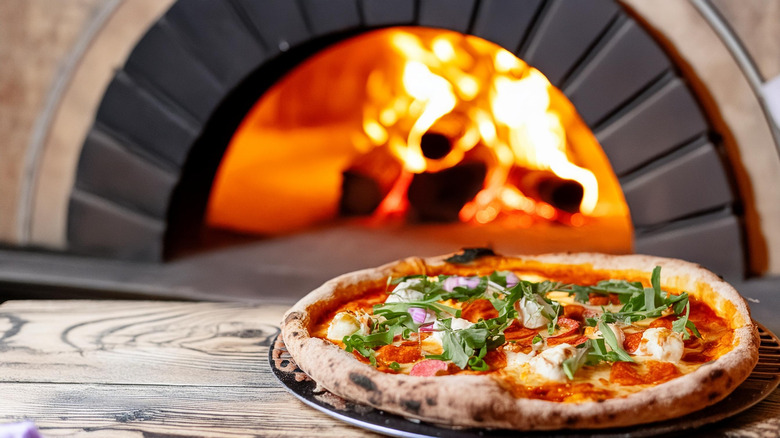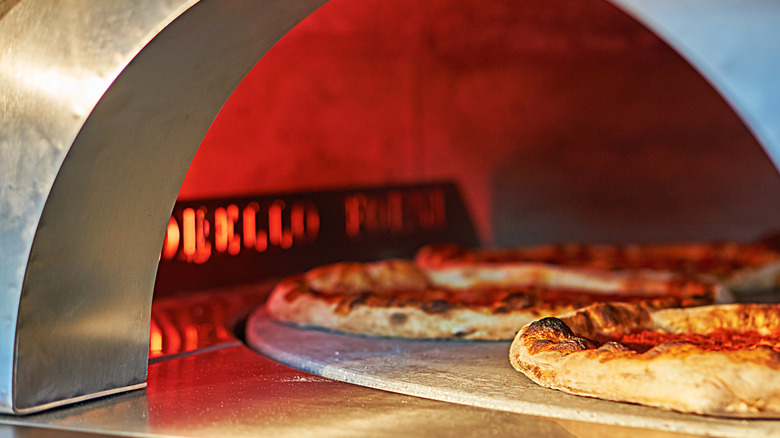Why A Pizza Stone Is Considered The Best Way To Make Homemade Pizza
We may receive a commission on purchases made from links.
If you think you can't make pizzeria-quality pizza at home without a wood-burning oven, you are wrong. You don't even have to shell out hundreds of dollars for one of those countertop pizza ovens either (although a home pizza oven will transform your frozen pies). This is all thanks to pizza stones.
Many people know the pain of spending hours making the best pizza dough of their life only for it to come out of their home oven soft and soggy. Rest assured, this isn't your fault; it's because your home oven is not hot enough. Traditional, wood-burning pizza ovens get up to 1,000 degrees Fahrenheit. This is twice the maximum temperature of most home ovens. While they won't make your oven any hotter, pizza stones provide an extra-hot surface for your pizza to bake on, giving you a crisp, lightly charred pizza. As an added bonus, pizza stones evenly disperse heat within your oven, ensuring even cooking. Thanks to this, using a pizza stone ensures that your pizza will be of restaurant quality without you having to pay thousands of dollars for a specialist oven.
For these reasons, pizza stones are an affordable, simple, and underrated tool that anyone who likes making pizza should keep in their kitchen. Even if you think you don't like making pizza at home because you can't get the crust to bake right, using pizza stones like this 16-inch, cordite Old Stone pizza stone will surely change your mind.
How to properly use a pizza stone
Despite the name, most pizza stones are actually made from a slab of unglazed clay, usually about 1 inch thick. While great for cooking pizzas on, this material is quite fragile, meaning pizza stones must be used in a certain way. Most importantly, you must always make sure to put your stone into an oven before you turn it on to preheat. Placing a pizza stone into a hot oven could cause it to crack from thermal shock. (What's more, it will not have time to absorb much heat before you cook on it, making it all but useless.) For this reason, hot pizza stones should also be allowed to cool gradually inside the turned-off oven; you should never run cold water over your hot pizza stone to cool it.
After placing the stone into a cold oven, you can crank your oven up. Be sure to give your pizza stone ample time, at least 30 minutes, to heat up before baking your pizzas on it. Most people don't have a pizza peel handy at home, but you can use a large plate without a lip, or even a cutting board, instead.
You are bound to get some food burnt onto your stone with repeated use, but the most important thing to remember when cleaning your pizza stone is not to soak it; the water could be absorbed into the porous clay or cordite, seriously damaging it. Instead, use a stiff piece of steel wool to scrape off any stuck-on food. Honestly, I get by just fine by placing a sheet of parchment paper under my pizzas.

